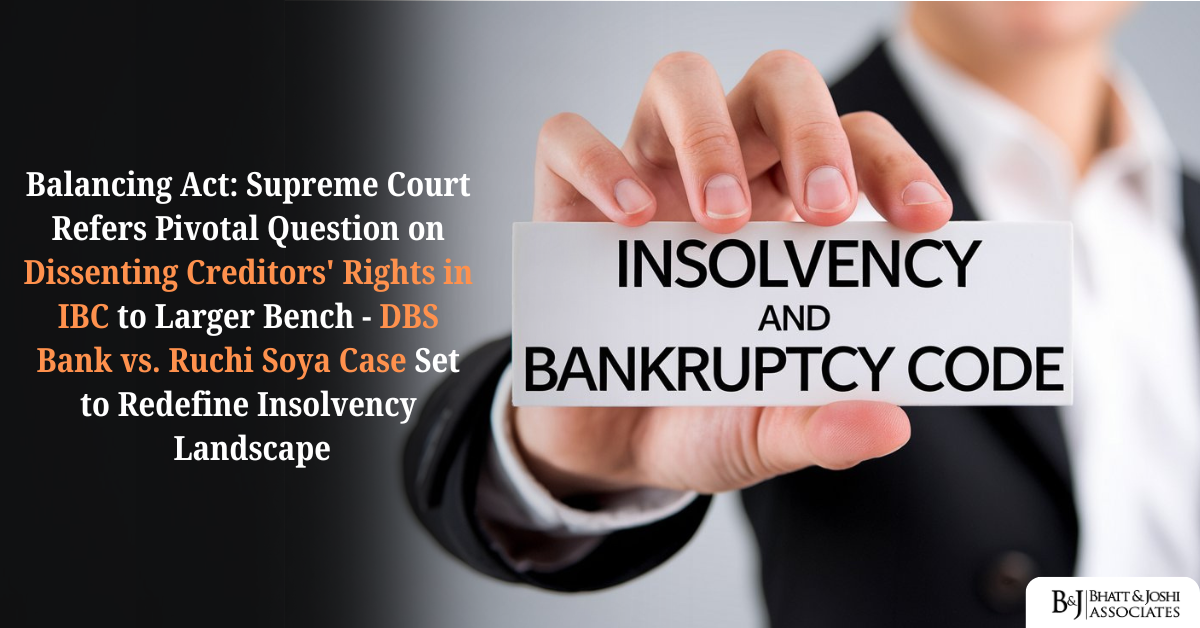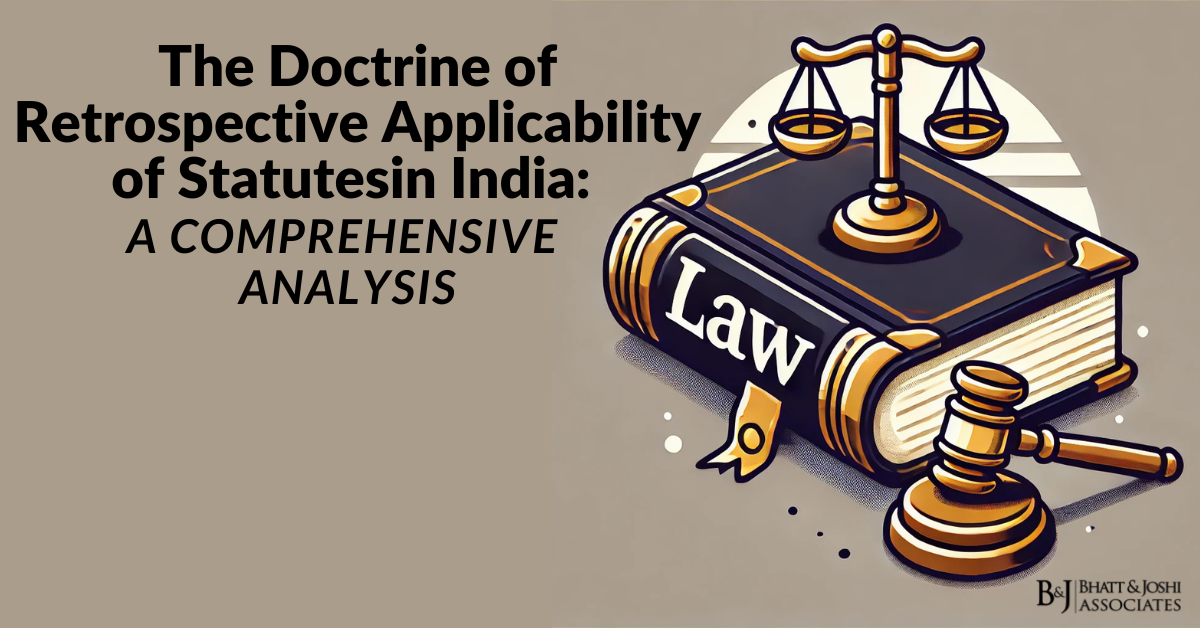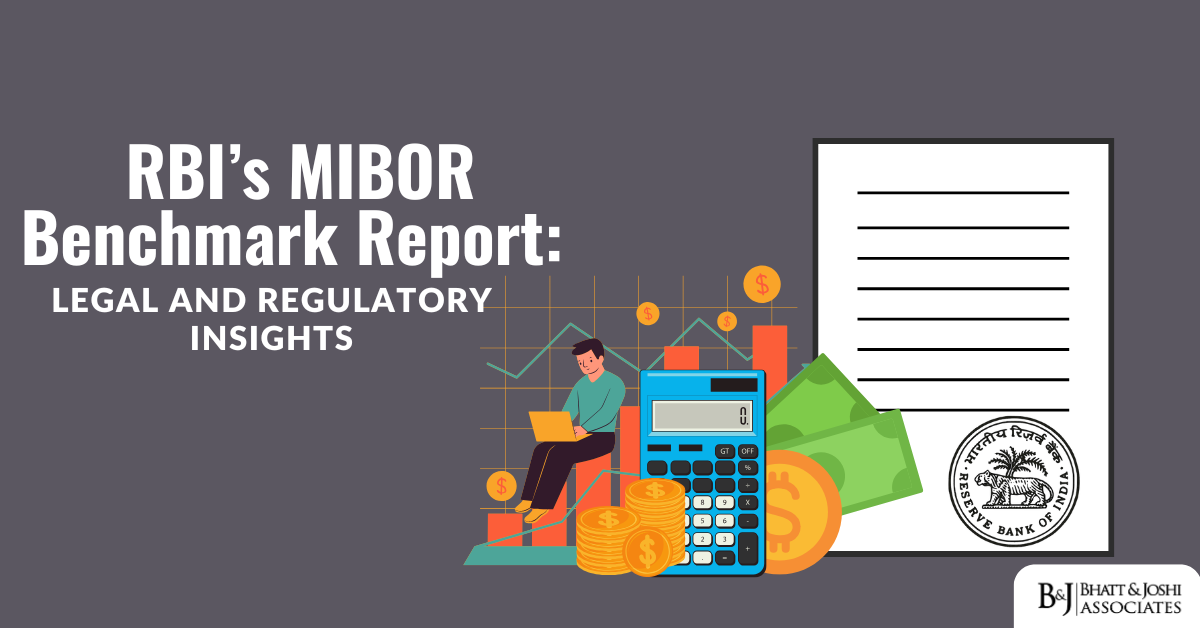Introduction
In a landmark decision that could significantly impact India’s insolvency resolution framework, the Supreme Court has referred a critical question regarding the rights of dissenting financial creditors under the Insolvency and Bankruptcy Code (IBC) to a larger bench. The case, DBS Bank Limited Singapore v. Ruchi Soya Industries Limited, delves deep into the interpretation of Section 30(2)(b)(ii) of the IBC, a provision that has been the subject of considerable debate in insolvency circles.
Background of the Case: A Closer Look at DBS Bank vs. Ruchi Soya Case
The case originated from a financial debt of approximately $50 million (Rs. 243 crores) extended by DBS Bank Limited Singapore to Ruchi Soya Industries Limited. This debt was secured by exclusive charges over several assets of Ruchi Soya, including properties in Gujarat, Rajasthan, Madhya Pradesh, and Mumbai.
When Ruchi Soya entered the Corporate Insolvency Resolution Process (CIRP) in December 2017, DBS Bank’s claim of Rs. 242.96 crore was admitted by the Resolution Professional. The subsequent events unfolded as follows:
- March 2019: Patanjali Ayurvedic Limited submitted a resolution plan for Rs. 4,134 crore.
- April 2019: DBS Bank raised concerns about the treatment of its superior security in the distribution of proceeds.
- April 30, 2019: The Committee of Creditors (CoC) approved the resolution plan with a 96.95% vote, with DBS Bank dissenting.
- July 24, 2019: The National Company Law Tribunal (NCLT) granted provisional approval to the plan and dismissed DBS Bank’s application challenging the distribution mechanism.
- September 4, 2019: NCLT gave final approval to the resolution plan.
DBS Bank challenged these decisions before the National Company Law Appellate Tribunal (NCLAT) and subsequently before the Supreme Court.
Core Legal Issue
The central question before the Supreme Court was:
“Whether Section 30(2)(b)(ii) of the Insolvency and Bankruptcy Code, 2016, as amended in 2019, entitles the dissenting financial creditor to be paid the minimum value of its security interest?”
This provision, as amended in 2019, states that a resolution plan must provide for payment to dissenting financial creditors of an amount not less than what they would receive in the event of liquidation under Section 53(1) of the IBC.
Detailed Analysis of the Court’s Reasoning in DBS Bank vs. Ruchi Soya Case
- Applicability of 2019 Amendment:
The Court first addressed whether the 2019 amendment to Section 30(2)(b)(ii) was applicable to this case. Relying on Explanation 2 added to the provision, the Court concluded that the amendment was indeed applicable to pending proceedings, including appeals. This interpretation ensures that the protective measure for dissenting creditors applies broadly, even to cases that were ongoing when the amendment came into force. - Interpretation of Section 30(2)(b)(ii):
The Court engaged in a detailed examination of this provision, emphasizing several key points:- Recognition of Creditor Diversity: The provision acknowledges that all financial creditors may not be similarly situated, particularly in terms of the security they hold.
- Minimum Protection: It ensures that dissenting financial creditors receive at least the amount they would get if the company were liquidated under Section 53(1).
- Balance with CoC’s Wisdom: While respecting the commercial wisdom of the CoC, the provision acts as a safeguard for minority creditor rights.
- Conversion of Security Interest to Monetary Value:
A crucial aspect of the Court’s analysis was its interpretation that dissenting financial creditors are entitled to receive the monetary value equivalent to their security interest, but cannot enforce the security itself. This interpretation serves two purposes:- It protects the dissenting creditor’s economic interest.
- It ensures the viability of the resolution plan by preventing piecemeal enforcement of security interests.
- Comprehensive Reading of Sections 52 and 53:
The Court rejected arguments that sought to isolate Section 53 from Section 52 of the IBC. It held that to give full effect to the legislative intent behind Section 30(2)(b)(ii), Section 53 must be read in conjunction with Section 52, which deals with secured creditors’ rights in liquidation. This holistic interpretation ensures that the full value of security interests is considered when determining the minimum payment to dissenting creditors. - Disagreement with Previous Judgment:
In a significant move, the Court expressed reservations about certain observations made in the case of India Resurgence ARC Private Limited v. Amit Metaliks Limited (2021). The Court found these observations inconsistent with larger bench decisions in Committee of Creditors of Essar Steel India Limited (2020) and Jaypee Kensington Boulevard Apartments (2022). This disagreement centered on the interpretation of the rights of dissenting financial creditors and the extent of protection afforded to them under Section 30(2)(b)(ii).
Implications of the Referral
The Supreme Court’s decision to refer this matter to a larger bench has several significant implications:
- Clarification of Creditor Rights: It could lead to a definitive interpretation of the rights of dissenting financial creditors in insolvency resolutions, potentially impacting creditor behavior and voting patterns in CoC meetings.
- Impact on Resolution Plan Structuring: The ultimate interpretation could influence how resolution plans are structured and how proceeds are distributed among different classes of creditors.
- Balancing Stakeholder Interests: The larger bench’s decision will need to strike a delicate balance between respecting the CoC’s commercial wisdom and protecting minority creditor rights, a fundamental concern in the IBC framework.
- Valuation of Security Interests: The decision could have far-reaching consequences for how security interests are valued and treated in insolvency proceedings.
- Potential Legislative Impact: Depending on the larger bench’s interpretation, there might be a need for further legislative amendments to clarify the position of dissenting financial creditors.
Broader Context and Future Outlook:
DBS Bank vs. Ruchi Soya Case highlights the ongoing evolution of India’s insolvency regime. The IBC, since its inception in 2016, has undergone several amendments and judicial interpretations aimed at balancing various stakeholder interests while ensuring the law’s primary objectives of value maximization and timely resolution.
The larger bench’s decision will be crucial in shaping the future trajectory of insolvency resolutions in India. It could potentially influence:
- Investor confidence in the Indian credit market
- The behavior of financial creditors in insolvency proceedings
- The overall efficacy and fairness of the insolvency resolution process
As the legal and financial community awaits the larger bench’s decision, this case stands as a testament to the complex interplay of commercial realities and legal principles in the realm of insolvency law. The outcome will undoubtedly have a lasting impact on India’s insolvency jurisprudence and practice.
Conclusion: Watershed Moment for India’s Insolvency Regime
The Supreme Court’s referral of the interpretation of Section 30(2)(b)(ii) of the IBC to a larger bench in the DBS Bank vs. Ruchi Soya case marks a pivotal moment in India’s insolvency jurisprudence. This decision underscores the ongoing challenge of balancing diverse stakeholder interests within the insolvency framework.
The larger bench’s ruling will have far-reaching implications:
- It will provide crucial clarity on the rights of dissenting financial creditors, potentially influencing creditor behavior in future insolvency proceedings.
- The decision is likely to impact how resolution plans are structured, particularly in terms of distribution mechanisms.
- It may affect the broader Indian credit market, influencing how financial institutions assess and price credit risks.
- The ruling could necessitate further legislative refinements to the IBC, highlighting the dynamic nature of insolvency law.
- From a global perspective, this development will be closely watched, potentially influencing cross-border insolvency practices and foreign investment decisions.
Ultimately, DBS Bank vs. Ruchi Soya case represents a critical juncture in the evolution of India’s insolvency regime. The outcome will not only resolve the specific issue at hand but also contribute significantly to the broader jurisprudential framework of corporate insolvency in India. As the country continues to refine its approach to insolvency resolution, the decision that emerges from this referral will play a crucial role in shaping a more robust, fair, and efficient insolvency framework, contributing to India’s economic growth and financial stability.














